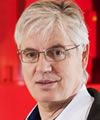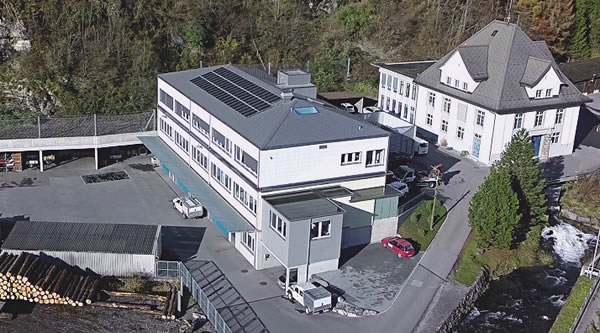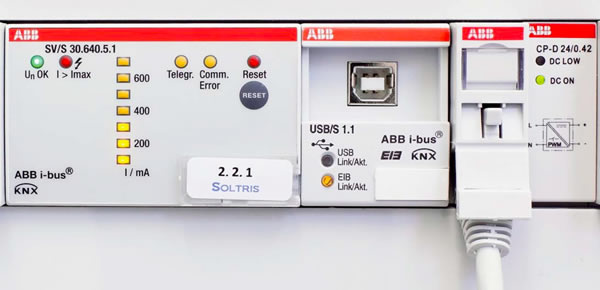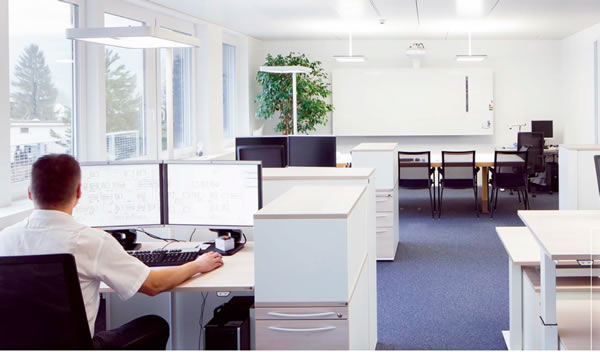 By Franco A. Bonutto, Soltris Gebäudesystemtechnik.
By Franco A. Bonutto, Soltris Gebäudesystemtechnik.
As a public utility company in Switzerland, Technische Betriebe Glarus Nord (TBGN) has statutory obligations regarding energy saving. Having decided to expand its office complex by adding another floor, TBGN commissioned us to plan, build and install an energy-efficient system for lighting, shading and HVAC control. The project was undertaken in 2014.

The Brief
The brief was to create a pleasant working environment for TBGN employees that consumes a minimum of power thanks to automated HVAC, lighting and shade conrtol. The system was to comply with the requirements of the Minergie standard, a Swiss construction standard for the efficient use of resources in new buildings and for building renovations.
The Solution
A system based on KNX was the obvious solution, since the primary advantage of KNX is its flexibility. KNX devices are compatible with other devices, and we could integrate them into the new system entirely in line with our technical requirements.
We chose ABB products because ABB offers an incredibly wide product range. In addition, not only would the KNX devices from ABB fit seamlessly into the precisely-planned systems for lighting and temperature control, they are also Minergie standard-certified.

The building automation encompassed the areas of heating and cooling, lighting and shade, as well as ventilation of the rooms. Sensors in the ventilation ducts record the current air quality. On the basis of these readings, the fan actuators ensure a consistently high quality of room air. The blinds are motorised and offer automatic protection from the sun.
Lights with integrated presence detectors determine whether people are in the room, and regulate the light accordingly, as well as the heating and cooling in combination with a room thermostat. Sensors detect when a window is opened and send a signal to the room thermostat to shut down the heating.

Conclusion
Adding another storey to its office building presented the perfect opportunity for TBGN to set a good example for other companies in terms of energy efficiency. Using KNX devices from ABB for HVAC and lighting automation, TBGN has been able to reduce the annual electricity consumption for the extension by 30%, thereby complying with the EN 15232 standard. The project was also awarded a contribution from the EM ecowin fund by the EM ecowin initiative from Elektro-Material AG, the leading electrical wholesale company in Switzerland.
Indeed TGBN is very pleased with the performance of the new addition to the building. As Tony Bürge, Managing Director of Technische Betriebe Glarus Nord, put it, “As part of the office extension, it was important that we create a working environment in which our employees feel comfortable and which uses a minimal amount of energy. Thanks to systems for the constant control of light levels as well as presence and needs-based ventilation, we have been able to reduce our energy costs in the new building by around 30%.”
Equipment List
The following ABB devices were used:
ABB i-bus KNX/DALI Gateway.
SIDUS-RTR room thermostats.
Light sensors for light controllers to ensure constant control of light levels.
VAA valve drive actuator.
SMISSLINE pluggable system.
Franco A. Bonutto is the CEO and owner of Soltris Gebäudesystemtechnik GmbH, specialist in systems integration and building automation.












